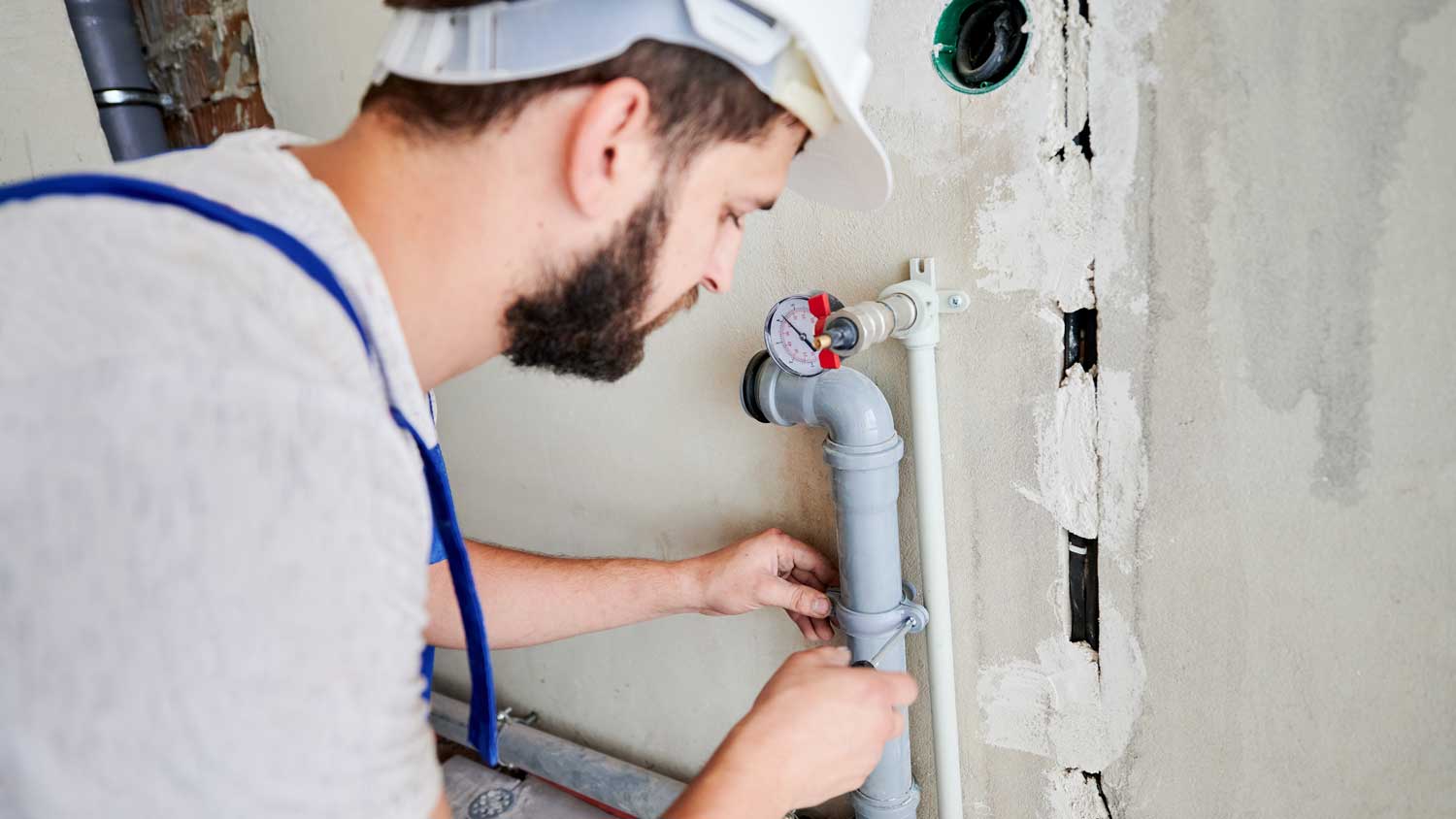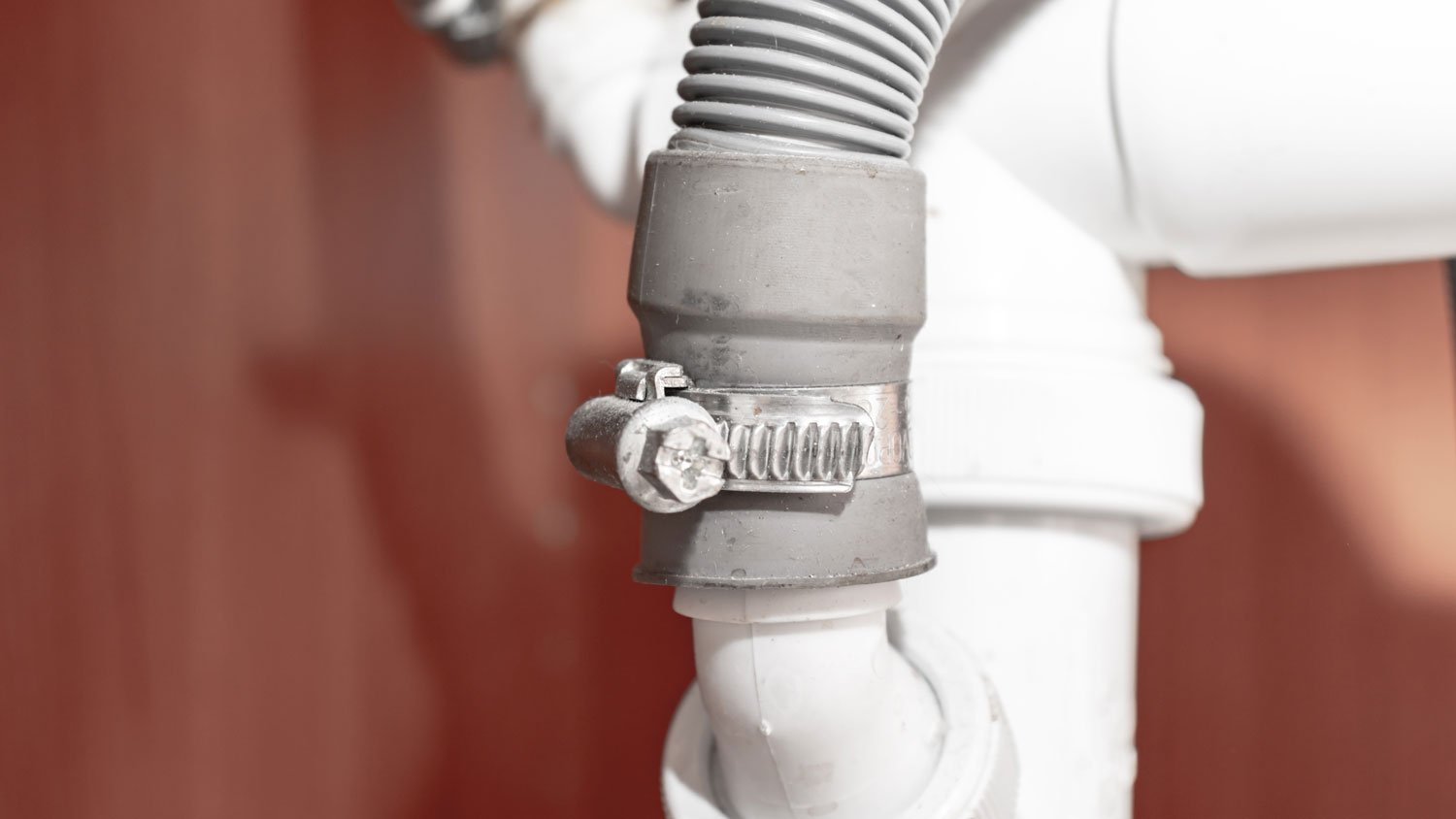
New York plumbers are some of the priciest in the nation. High cost of living and aging buildings contribute to their hefty price tag. Learn the other factors affecting how much a plumber costs in New York City.
Pipe clamps seem simple, but they do the heavy lifting in your home’s plumbing


Talk to a plumbing repair pro to determine the best type of pipe clamp for your needs, as they’ll be able to assess the pipe size, temperature, weight, and environment.
The choice of pipe clamp largely depends on the environment where they’re being installed.
Insulated pipe clamps are optimal if you need to allow for pipe expansion and contraction.
Your local building code might have requirements for pipe clamps, including which type you can use, how many clamps you’ll need, and how far apart to space them.
Pipelines run throughout our homes, carrying plumbing, heating, drainage, electrical wire, and more. They run vertically and horizontally through wall cavities, ceilings, and basements—staying safely out of our way. The simple pipe clamp is the key to keeping lines suspended from ceilings and securely attached to walls. Some clamps must handle high temperatures, while others must be flexible as pipes expand or move. These are the most common pipe clamp types and the applications you might use them for.


Standard pipe clamps are the most common and basic clamp design. They involve two equal parts that each surround half of a pipe or a group of pipes. These parts are held together by tightening screws. Standard clamps work best with rigid pipe materials such as metal or plastic and can be used vertically or horizontally for plumbing and heating.
You'll find standard pipe clamps in various sizes and styles to fit most needs. Standard pipe clamps often consist of bare metal that sits right against the pipe. However, there are also insulated versions with a material that provides a cushion between the clamp and the pipe to allow expansion during temperature changes.
Best for: Metal and plastic pipe installations
Many types of pipe clamps come in a plastic version. You’ll commonly see a quick-release style where the pipe runs through the clamp, and the clamp's arm is closed over it to secure it.
Plastic is useful for plastic or PVC plumbing that can crack or break when metal clamps are secured too tightly. Plastic also provides a softer hold for soft metal plumbing materials such as copper. Plastic clamps won't corrode as easily in environments that would otherwise damage metal, though you should ensure they can handle the temperatures in the installation area.
Best for: PVC and plastic piping, as well as soft metals

U-bolt clamps are solid and straightforward. They consist of the following parts:
A metal U-shaped rod where a pipe or group of tubes, rods, and lines sit
A saddle plate that fits over the two rod ends and tightens down on the pipes
Two hex nuts to tighten the saddle on the threaded rod ends
U-bolts are typically made of aluminum or steel and can support a lot of weight. They often hold steel or copper pipes that must be elevated or secured to beams and ceilings. You can also use them outside where the elements would ruin smaller or weaker clamp types.
Best for: Heavy-duty elevated pipes and outdoor pipes
The saddle clamp is one piece that holds a pipe on one side and is secured directly to a flat surface with screws. These clamps are ideal for securing a pipe directly to a flat surface rather than letting it hang suspended. They don't allow for movement, so they don’t work well for pipes that change temperature drastically or make lots of noise.
Best for: Pipes on flat surfaces
Heavy-duty pipe clamps live up to their name. They usually come in strong metals such as steel that can hold up heavy pipes with full loads running through them. For that reason, they're often used to hold up the main water supply line in a building. Like standard pipe clamps, they come in two parts with locking bolts on either side. You can also find lined versions to reduce noise.
Best for: Main water supply
Pipe clamps come in different materials—from steel and copper to plastic. These materials all have different pros and cons. You’ll need to make sure the material of a pipe is compatible with the material of the pipe clamp. For example, you can’t mix copper clamps with steel pipes. Also, some pipes and clamps react chemically and cause corrosion. Metal water pipes may vibrate in metal clamps and cause noise without insulation.
Here are the materials you can choose from.

Steel clamps often come coated in zinc to resist corrosion. They can safely carry steel or cast-iron tubes. They can also carry plastic or copper as long as they have a lining of nylon insulation. Otherwise, the materials will chemically react.
Stainless steel clamps resist corrosion and work well for outdoor use. You can't use them with copper or carbon steel pipes, but they are compatible with brass pipes if the steel grade is 301, 304, or 310. Like other steel pipes, they must have the proper lining to carry plastic or copper.
These soft clamps are well-suited to installations requiring flexibility due to heat or cold. They can safely carry PVC or PEX piping thanks to their softer grip.
Copper clamps are standard in indoor plumbing since they won't react with water. Copper is a soft metal that won't damage soft pipe materials like plastic or copper. However, these clamps are chemically incompatible with steel pipes.
The best type of pipe clamp for your needs depends on the type of plumbing pipe you’re using. That includes pipe size, temperature, weight, and the environment. When you work with a plumber near you, they’ll have the knowledge and experience to recommend the proper combination of clamp and pipe materials for your installation environment.
Since pipes can expand and contract with temperature changes, it’s important to consider temperature when choosing the best pipe clamp. Metal clamps can be brittle and crack or break, while plastic clamps are more flexible and allow for more movement. Additionally, certain pipe materials will have more thermal expansion than others, and hot water lines tend to be exposed to some of the most drastic changes.
Your clamp needs to fit comfortably around the pipe. Use calipers to measure the outside diameter of your pipe to figure out the ideal clamp size.
Clamps can only support a certain amount of weight. When you choose a clamp, check the maximum load on the packaging or instructions. For heavier loads, you may need more clamps or heavy-duty clamps.
The environment plays a huge role in choosing the best type of clamp for a pipe. Consider the location. Is it indoors or outdoors? Where is the pipe located in the room? A U-bolt clamp can better support a pipe suspended from a ceiling, while a saddle clamp may work best to secure a pipe directly to a wall.
Keep in mind that certain clamps aren’t suitable in situations where pipes are prone to vibration or exposed to water. Clamps in uninsulated or outdoor areas will have to withstand greater temperature changes than those in an indoor environment.
Your local building code will have some requirements for pipe clamps. This includes when to use certain types of pipe clamps, how many clamps you’ll need, and how far apart you should space the clamps. Make sure you check your local code requirements before you install pipes, or consult a local plumbing repair service instead.
We needed a couple of minor plumbing repairs done. Lopez Plumbing arrived on time and was very respectful of our time and space and have reasonable advice about the maintenance of equipment and proactive steps to take.
Quality plumbing work!!! Very responsive and transparent about all costs up front. Overall I was very satisfied with his professionalism and quality of work!!!
Overall much higher quality work, now the walls are plumb and square, tile pattern is correct and well balanced. The bathroom design is exactly the same other than a few minor details where they suggested a different angle or joint but if you could see them side by side there's no comparison...
I have rental properties and every time I hired this company for any plumbing-related issue, they always solved the problem. I would not work with anyone else, I trust them completely. I have been using this company for years.
We purchased a home that was need of a bit of work and I had great difficulty finding good firms that charged fair prices and performed well. I first hired JMZ to clean the yard and cut the grass. I saw Jose's truck in the area and called the number on the side. In the past two years Jose and...
Andrew and his crew at Islander painting are precise and clean up after their work. I would definitely hire them again!!!
Armend Gojani at Rite Plumbing and Heating is incredibly nice, courteous, knowledgeable and honorable. He has been a pleasure to work with, and so far most of the plumbing problems have been fixed - one more to go.
Clayton and his associate were fantastic! He accommodated my request to remove a considerable amount of stuff from a residential home in Port Orange (even changing my original appointment date very last minute at my request). He was early to the job, careful not to remove or damage anything...
Professional, courteous and great quality. Would hire the team again.
Tell me that unless I pay $95 they will not come out to give me an estimate
From average costs to expert advice, get all the answers you need to get your job done.

New York plumbers are some of the priciest in the nation. High cost of living and aging buildings contribute to their hefty price tag. Learn the other factors affecting how much a plumber costs in New York City.

Discover the primary factors that affect your main water line replacement cost in New York, including length, materials, and the necessary installation method.

Discover the pricing factors that will affect your main water line repair cost in New York, including the repair type, size, and accessibility challenges.

Severe winter weather causes well water pipes to freeze, obstructing water flow and leading to pipe bursts. Here’s what to do if your well water is frozen.

Installing a new kitchen sink involves removing the old sink and putting in the new one. Follow these steps to learn how to install a kitchen sink like a pro.

There are a few plumbing terms that everyone needs to know. Using this informative guide, you’ll learn plumbing terms like flapper and shut-off valve to help you tackle both emergencies and everyday annoyances.